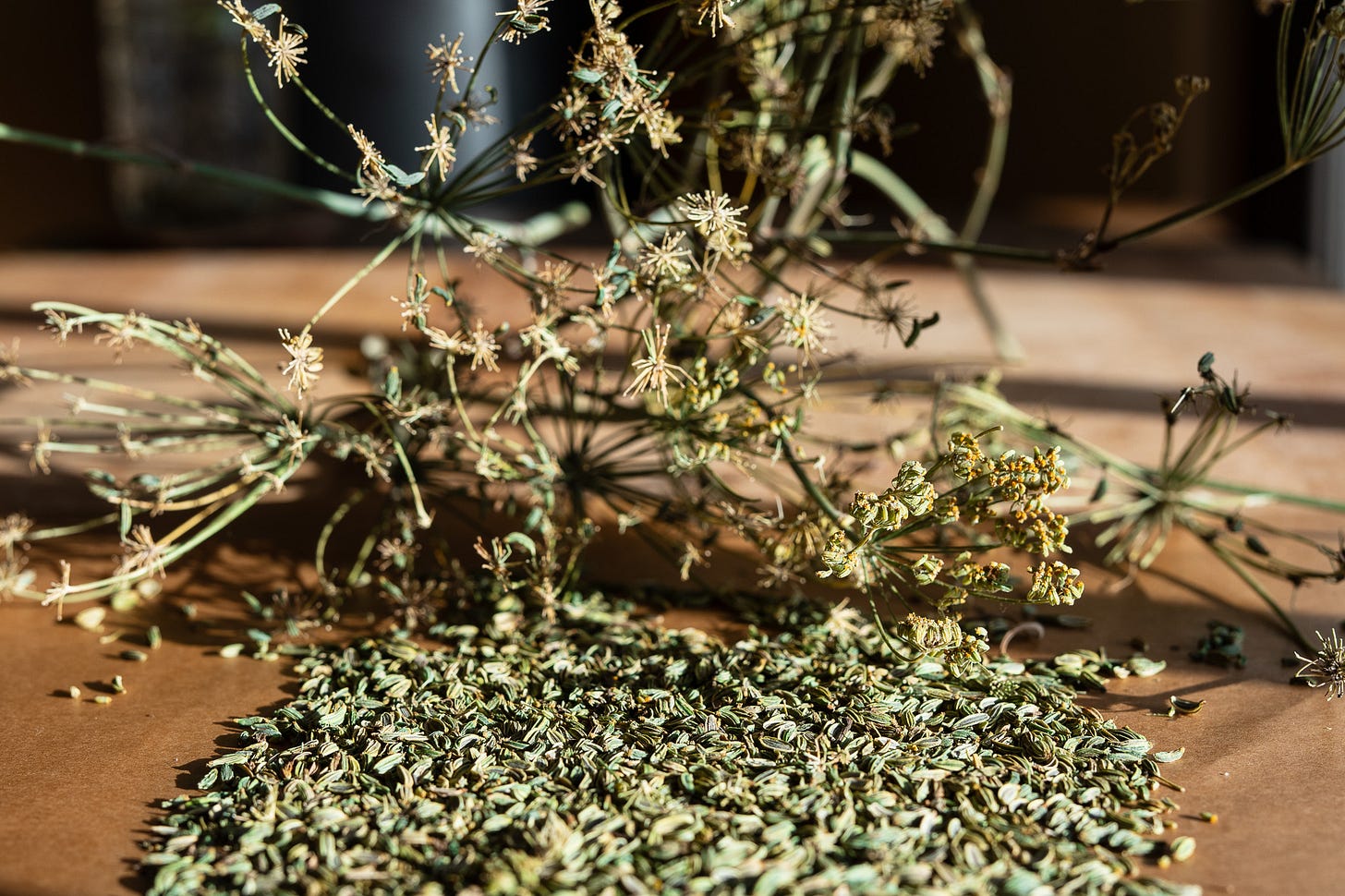It is against the law to sell “Italian Sausage” in America unless it contains fennel, anise, or both. I found this out when I started my company, Fra’ Mani Handcrafted Foods which specializes in making Salumi in the Italian tradition. When we started out, I wanted to make fresh Italian sausage that delivered on the superior quality of our meat rather than putting the seasoning first, but under USDA guidelines, fennel and anise are an essential part of “Italian Sausage” identity. Without it, a product label submitted to USDA for approval would most certainly be rescinded. A scrupulous USDA inspector may check your batch sheet to confirm that your “Italian Sausage” matches your ingredient statement. Add any of the guideline’s acceptable inclusions—red or green peppers, fresh or dehydrated onions, garlic, parsley, sugar in various forms and spices and “flavorings”; make it from pork or beef or veal, smoke it or cook it, but don’t forget the fennel. The guidelines don’t specify how much fennel is necessary to qualify. A friend in the sausage business says that simply waving a little dust over the batch is fair enough. But most brands honor the promise.
To some Italian expatriates in the US, American “Italian Sausage” is incongruous because it contains fennel. I have heard this expressed particularly by Northern Italians who pine for the coarse-ground pork “salsiccia” of their home region, seasoned with nothing more than salt and pepper, and a splash of garlic-infused wine. But this simple version is by no means definitive. Up and down the boot, there is a “salsiccia” to every region, province, or even city. These may be made with different cuts of pork or other species or a combination, coarsely or finely ground and with varied seasonings. Some are meant to be eaten fresh, others aged; some are lean for grilling, and still others are rich in fat for the braising pot. Some are smoked, but most of them are not. Or “salsiccia” becomes the defining ingredient in a particular dish: The city of Mantova is famous for its rustic Risotto alla pilota that features “salamella” a course ground sausage, its flavor foundation. The city of Monza in Lombardy marries its own version of “Luganega” sausage in a risotto perfumed with saffron. So important is “salsiccia” in the culinary culture of Italy that the Calendar of Italian Food designates National Sausage Day (“Giornata di Salsiccia Nazionale”) on January 18 for its celebration of regional and local varieties.
“Salsiccia” is the likely spawn of “Luganega” (or “Lucanica”) named after Lucania, an ancient Roman territory (now Basilicata) where Italian sausage is said to have originated. The recipe for Lucanica was documented by the Roman epicure Apicius who is credited with having compiled one of the first known cookery books although not the only one to reference sausage-making. Lucanica in Apicius’s recipe was heavily spiced with a head-spinning mixture of “pepper, cumin, rue, parsley, sweet spices, laurel, fennel and a lot of fat”. Interestingly, there is no salt in the recipe, but there is “liquamen”, a salty fish sauce that I would guess, rounded out the seasoning. Lucanica was stuffed into hog intestine, aged for 20 days, and then smoked. Packed as sustenance for Roman legions as they made their peregrinations throughout Italy, Lucanica spread far and wide and was adapted to people and places. The regions of Lombardy and Veneto have their own highly distinctive versions of Lucanica, but almost everywhere else, it is a fresh ground sausage seasoned according to whoever makes it. “Salsiccia” is generally tied off into individual links while lucanica is stuffed continuously, coiled in the form of a snail, and sold by the meter. But, no matter where or how it is made, Lucanica is deeply rooted in Basilicata. The commune of Picerno in Basilicata and surrounding territories has established “Lucanica di Picerno” as a product with protected origin (IGP) to distinguish it from “illegitimate” versions found throughout Italy, Europe, and even America. The predominant aroma of authentic Lucanica sausage comes from the seeds of wild fennel.
Keep reading with a 7-day free trial
Subscribe to Notice! to keep reading this post and get 7 days of free access to the full post archives.





